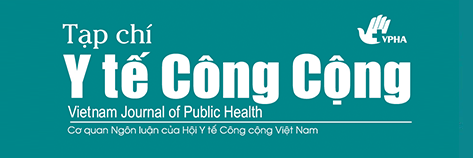Tần suất, mức tiêu thụ nước ngọt có ga không cồn ở học sinh hai trường THPT tại Hà Nội năm 2015 (Carbonated soft drink consumption among high school students in two high schools in Hanoi, 2015)
Tóm tắt
Nước ngọt có ga không cồn được tiêu thụ phổ biến ở nhiều nơi trên thế giới cũng như ở Việt Nam, đặc biệt là giới trẻ. Việc xác định mức tiêu thụ nước ngọt có ga hiện nay ở Việt Nam chủ yếu dựa vào tổng lượng tiêu thụ nước ngọt có ga trên thị trường. Mục tiêu: Xác định tần suất và mức tiêu thụ nước ngọt có ga không cồn trong vòng 1 tháng trước cuộc điều tra ở học sinh tại hai trường PTTH tại Hà Nội. Phương pháp: Sừ dụng phương pháp điều tra tần suất tiêu thụ thực phẩm bán định lượng với 620 học sinh ở 2 trường THPT Hà Nội năm 2015 (1 trường ở khu vực nội thành và một trường khu vực ngoại thành) để xác định mức tiêu thụ nước ngọt có ga. Kết quả cho thấy Tỷ lệ học sinh sử dụng nước ngọt có ga trong vòng 1 tháng trước cuộc điều tra rất cao (83,6%). Mức độ thường xuyên uống nước ngọt có ga cao nhất là 1-2 lần/tuần (21,3% ) Rất ít học sinh sử dụng nước ngọt có ga hàng ngày (8,4%). Trung bình 1 học sinh tiêu thụ 2094 ml nước ngọt có ga trong 1 tháng trước cuộc điều tra, trong đó học sinh ngoại thành tiêu thụ nhiều hơn học sinh nội thành và nam tiêu thụ nhiều hơn nữ 1 cách có ý nghĩa thống kê (p<0,01). Khuyến nghị: Cần tiếp tục có các nghiên cứu ở qui mô lớn hơn về lượng tiêu thụ nước ngọt có ga ở người Việt Nam và tuyên truyền về các nguy cơ sức khỏe khi sử dụng nước ngọt có ga.
English abstract
Carbonated soft drink (CSD) consumption is very popular in all over the world and in Vietnam, especially among young people. Exploring the CSD consumption level in Vietnam has been conducted based on the total amount that has been sold out in the market so far. This article is aimed to identify the frequency, consumption level of CSD within one month before survey among high school students. The semi-quantitative food frequency was used with 620 high school students in two High schools in Hanoi in 2015 (one is in rural and the other is in urban area). The results showed that, high prevalence of high school students was consumed the CSD within one month before the survey (83.6%). The highest consumption rate was 1-2 times a week (21.3%) and very few students were drunk CSD daily (8.4%). The average of total amount consumption was 2094 ml CSD per student in one month before the survey. The rural’s students was consumption higher than those in urban and men students was consumption higher than female students (significantly difference with p<0.01). Recommendation: continue to conduct the research with larger scale about CSD consumption in Vietnam and health education about risks associated with CSD.
Từ khóa
Toàn văn:
PDF (English)##submission.citations##
Nguyen T. Hang (2014), Báo cáo ngành ViettinbankSc, Ngành sản xuất Nước giải khát không cồn Việt Nam.
Hoàng Xuân Quyến và Lê Thị Thư (2008), Báo cáo ngành Bia- rượu- nước giải khát Việt Nam, TVSI- research department, Hà Nội.
Agriculture and Agri- Food Canada (2012), American eating trends report: carbonated soft drink.
Anna Rangan et al. (2009), Soft drink, weight status and health, NSW Centre for Public Health Nutrition, Sysney.
Basu S. et al (2013), "Relationship of soft drink consumption to global overweight, obesity, and diabetes: A Cross-national analysis of 75 Countries", American Journal of Public Health. 103(11), p. 2071-2077.
Business Monitor International (2012), Vietnam food and drink report, London.
Euromonitor International : Country Market Insight (May 2010), "Soft Drinks - Vietnam".
Kumar GS et al. (2012), "Sugar-sweetened beverage consumption among adults - 18 States", Morbidity and Mortality Weekly Report. 63(32), p. 682-716.
Michael S. and Jonas F. (2012), Soft drink in 2013: The quest for growth in a multi-polar world, Department of Nutrition at Harvard School of Public Health.
The Statistics Portal (Producer) (2013), "Carbonated soft drink (CSD) volume shares worldwide in 2013 , by region".
Sa'eed Bawa (2005), "The role of the consumption of beverages in the obesity epidemic", The journal of the Royal Society for the Promotion of Health. 125(3), p. 124-128.
W&S market research (2013), Thói quen sử dụng nước ngọt có ga của người Việt Nam.



